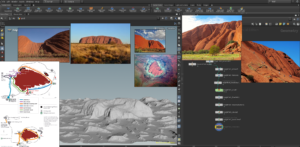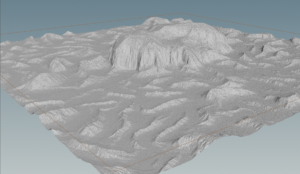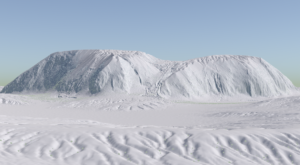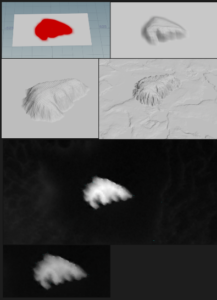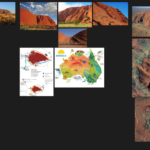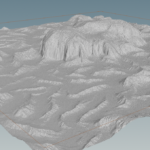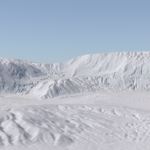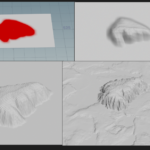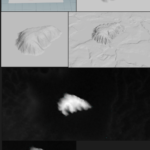BUILD DIARY
Making of Uluru Ayers Rock, Australia
The Challenge
Standing before Uluru in person is a humbling experience. The sheer scale, the ancient weathered surfaces, the way light plays across its rust-colored face throughout the day—it’s a monument that demands respect, both culturally and artistically. As a game environment artist, I found myself drawn to recreate this natural wonder, not just as a modeling exercise, but as a way to push my procedural workflow skills and explore the intersection of real-world reference and digital artistry.
Why Uluru? Why Now?
The decision to tackle Uluru wasn’t arbitrary. As someone constantly seeking to expand my technical toolkit, I recognized that recreating such a geologically complex formation would push me into uncharted territory. The rock’s distinctive layered structure, its weathering patterns, and the surrounding landscape presented the perfect storm of technical challenges:
- Complex geological formations requiring nuanced procedural techniques
- Massive scale demanding efficient LOD systems
- Cultural significance requiring thoughtful, respectful representation
- Diverse material properties across different rock faces and weathering states
12 January
Day 1: Foundation and Reference
References to date

21 January, 2025
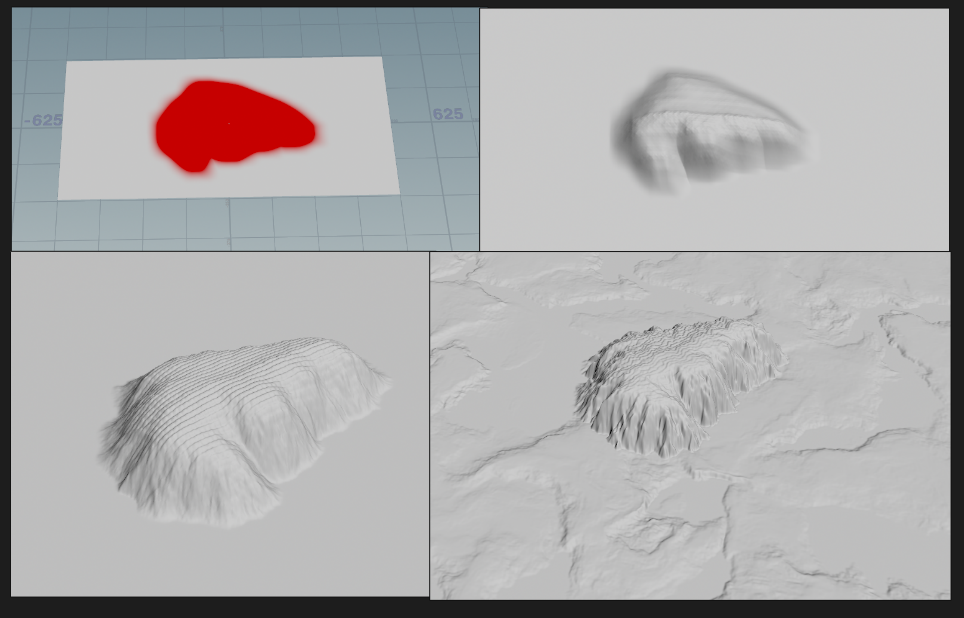
Every good environment starts with solid reference material. I spent considerable time studying geological surveys, satellite imagery, and photographic references to understand not just how Uluru looks, but how it was formed. Understanding the geological processes that shaped this monolith over millions of years became crucial for creating believable procedural rules.
My initial workflow decision came down to two tools: MapMagic in Unity versus Houdini. While MapMagic offered familiarity, its limitations in the free version, particularly around vegetation systems, made the choice clear. Houdini, despite its steeper learning curve, offered the procedural flexibility I needed for this ambitious project.
It’s not the best replica, but it’s taking its shape.
Day 2: Procedural Foundation
I have used Houdini prior, so the bulk understanding of UI and its tools was already familiar, but I just wasn’t sure how to implement it to make a finished work. The image below shows the screenshot of the current rock progress.
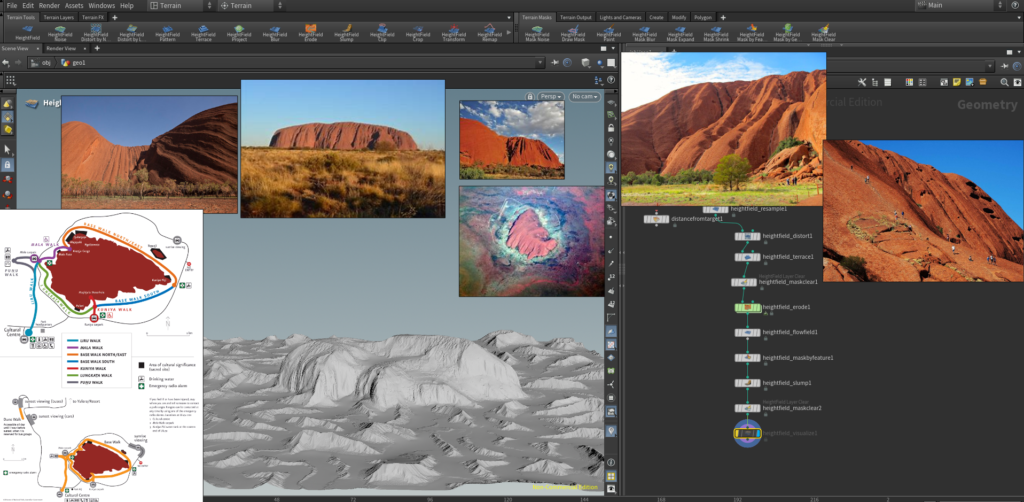
The beauty of Houdini lies in its node-based approach to problem-solving. Rather than sculpting Uluru directly, I focused on creating systems that could generate the rock’s characteristic features:
Heightfield Generation: Using noise functions layered with geological principles to create the basic mass
Erosion Systems: Implementing thermal and hydraulic erosion to simulate millions of years of weathering
Stratification: Creating the distinctive horizontal banding that makes Uluru recognizable
Surface Detail: Procedural systems for micro-details like cracks, weathering patterns, and surface irregularities
The goal was never a 100% accurate replica—that would be both impossible and unnecessary for game environments. Instead, I focused on capturing the feeling of Uluru, the aspects that make it instantly recognizable and emotionally impactful.
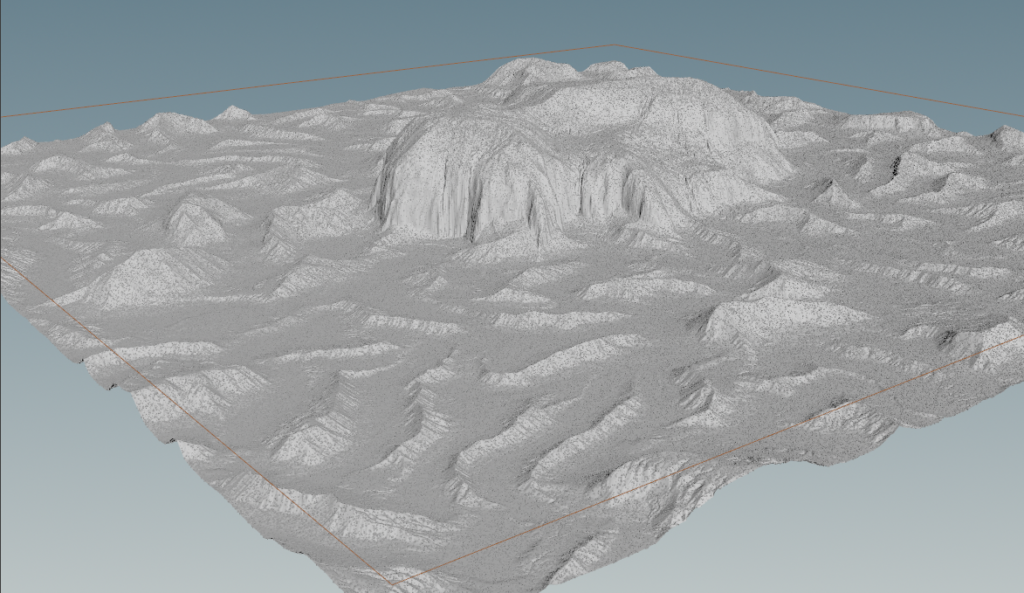

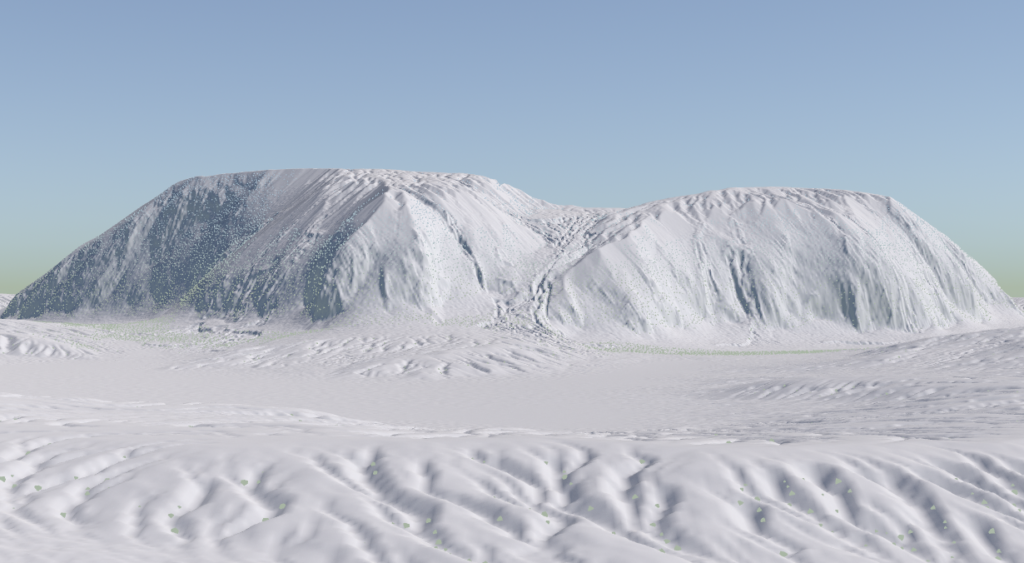
The Houdini Workflow
Working in Houdini requires a shift in thinking from traditional modeling approaches. Instead of pushing vertices, you’re designing systems. My node network evolved into a complex web of interconnected processes:
- Base Geometry: Starting with primitive shapes, modified through mathematical functions
- Noise Layering: Multiple octaves of noise at different scales to create natural-looking variations
- Erosion Simulation: Both thermal (gravity-based) and hydraulic (water-based) erosion for realistic weathering
- Texture Coordination: Ensuring procedural textures aligned with geometric features
The iterative nature of this workflow meant I could adjust parameters and see immediate results across the entire model, something impossible with traditional modeling approaches
Integration with Unreal Engine
The bridge between Houdini and Unreal Engine became crucial for validating the work in a real-time environment. Using Houdini’s game development tools, I could:
- Maintain editability through Houdini Digital Assets (HDAs)
- Export optimized geometry with proper LOD chains
- Generate texture maps that corresponded to the procedural surface details
- Create material assignments that would translate effectively to Unreal’s PBR pipeline
Challenges and Solutions
Scale and Performance
Uluru’s massive scale presented immediate performance challenges. A direct high-resolution translation would be impossible to run in real-time. My solution involved:
- LOD systems that maintained silhouette integrity while reducing polygon count
- Texture streaming approaches for maintaining surface detail at distance
- Procedural material blending to create variation without texture repetition
Cultural Sensitivity
Working with Indigenous Australian landmarks requires cultural awareness and respect. Throughout the process, I maintained focus on:
- Respectful representation without appropriation
- Educational value over pure spectacle
- Acknowledgment of the land’s traditional owners and cultural significance
Technical Limitations
Even with powerful tools, certain compromises were necessary:
- Artistic vision vs. technical constraints
- Simulation time vs. iteration speed balance
- Procedural complexity vs. performance requirements

The Road Ahead
This Uluru project represents more than just a modeling exercise—it’s a stepping stone toward more sophisticated procedural environment workflows. The techniques developed here will inform future projects, whether they’re fantastical alien landscapes or other real-world locations.

